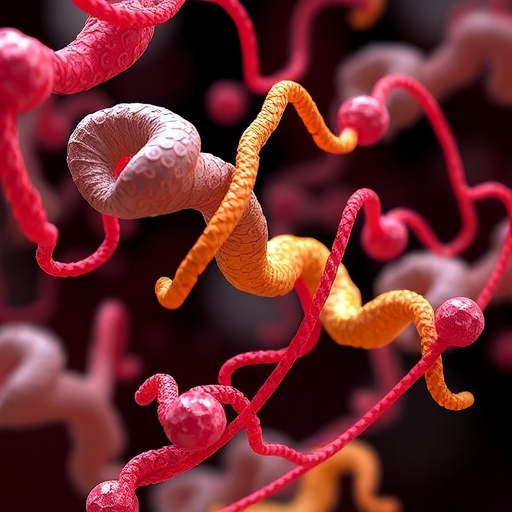Since their discovery in 2002, plant microRNAs (miRNAs) have emerged as pivotal players in regulating gene expression and ensuring the proper functioning of plant cells. Over the years, researchers have accumulated a wealth of knowledge about these small non-coding RNAs, their biogenesis, and their myriad roles in plant biology. The dynamic nature of miRNAs and their influence on gene regulatory networks have made them an exciting subject of investigation in the field of plant molecular biology.
The initial understanding of miRNAs enveloped their fundamental properties: these small RNA molecules are approximately 20-24 nucleotides in length and are primarily derived from longer precursor transcripts. The production of miRNAs involves a multi-step process that includes transcription, processing, and maturation. One of the key components of this production is the microprocessor complex, which consists of several proteins, including DICER-LIKE enzymes. This complex is responsible for recognizing and cleaving the precursor miRNA transcripts to produce mature miRNAs ready to regulate target genes.
A defining aspect of miRNAs is their interaction with target messenger RNAs (mRNAs). Each miRNA is typically involved in the post-transcriptional regulation of multiple target genes. The specificity with which miRNAs bind their targets is dictated by complementary base pairing, typically within the miRNA’s “seed region.” This unique mode of interaction, where a single miRNA can modulate the levels of various mRNAs, emphasizes their importance in maintaining cellular and physiological homeostasis in plants.
Further research has underscored the role of ARGONAUTE (AGO) proteins, the key effectors of the miRNA pathway. Once the miRNAs are processed, they associate with AGO proteins to form the RNA-induced silencing complex (RISC). This complex is crucial for guiding the bound miRNA to its target mRNA, leading to silencing either through mRNA degradation or translation repression. The interplay between miRNAs and AGO proteins not only enhances the understanding of gene silencing mechanisms but also highlights the evolutionary significance of these components, as they are conserved across various eukaryotic organisms.
Understanding the subcellular dynamics of miRNAs has emerged as an area of intense study. Recent advancements have mapped the cellular locales where miRNA processing and function take place. Research indicates that miRNA biogenesis might commence in the nucleus, where primary transcripts are initiated, and is subsequently complemented by cytoplasmic processing events. This compartmentalization has far-reaching implications, influencing the mobility of miRNAs and their capacity to function in neighboring cells, underscoring a fascinating aspect of plant intercellular communication.
Intriguingly, studies have indicated that miRNAs are not merely static players confined to their cells of origin. Evidence suggests that miRNAs can move between cells and signal the presence of stress or developmental cues, influencing neighboring cells’ gene expression patterns. Soon, researchers may uncover the mechanisms that facilitate this intercellular transit, shaping a new understanding of plant signaling pathways.
The nexus between miRNAs and translation is another emerging frontier that holds great promise for future discoveries. Recent hypotheses propose that miRNAs may influence not just mRNA levels but also the efficiency of translation itself. This connection between transcriptional regulation and translational output underscores the intricate balance plants maintain in responding to environmental stimuli. Understanding these mechanisms may yield insights into optimizing plant growth and resilience, especially in the face of climate change.
The relevance of miRNAs extends beyond basic biological roles; they are also key in plant responses to environmental stressors. When plants experience dehydration, salinity, or pathogen attack, specific sets of miRNAs are upregulated, directing resources toward protective measures. This adaptive response illustrates the functional importance of miRNAs in plant survival and fitness, highlighting their potential utility in crop improvement strategies aimed at enhancing yield under challenging conditions.
As the field progresses, integrating high-throughput sequencing and bioinformatics tools has further accelerated the discovery and characterization of plant miRNAs. These methodologies enable researchers to profile miRNA expression patterns across developmental stages and under varying environmental conditions. Such data can aid in elucidating the complex roles that miRNAs play within regulatory networks, providing a detailed view of plant development and adaptation.
Moreover, the technological evolution of CRISPR and gene editing has opened new avenues for manipulating miRNA pathways. These tools can foster precise alterations in miRNA expression or target interactions, allowing researchers to tap into their potential for improving crop traits. If successfully harnessed, this could revolutionize how we approach plant breeding and genetic modification, making crops more resilient to pests and diseases.
As the exploration of plant miRNAs continues to unfurl, intrinsic questions remain. How do specific configurations of miRNAs and their targets correlate with diverse traits in different plant species? What other biological processes are mediated by miRNAs that remain to be uncovered? The answers to these questions may bear profound implications not only for plant biology but also for biotechnology and agriculture.
In conclusion, the past two decades have seen significant strides in elucidating the biogenesis, function, and physiology of plant miRNAs. Their intricate involvement in regulating gene expression and responding to environmental cues reflects the complexity of plant life. As researchers delve deeper into these regulatory networks, the prospects of manipulating miRNAs for agricultural innovation appear increasingly promising. Future studies stand to reshape our understanding and application of miRNAs in promoting plant health and productivity in the face of an ever-evolving climate.
In summary, the ongoing research into plant miRNAs illuminates their critical roles in gene regulation, cellular communication, and stress responsiveness. Expanding our understanding of these fascinating molecules will undoubtedly lead to breakthroughs in plant science that could enhance global food security and sustainability. As we stand on this brink of discovery, the journey into the world of plant microRNAs promises to be as illuminating as it is transformative.
Subject of Research: Plant microRNAs (miRNAs)
Article Title: Plant microRNA maturation and function
Article References:
Yu, Y., Wang, H., You, C. et al. Plant microRNA maturation and function. Nat Rev Mol Cell Biol (2025). https://doi.org/10.1038/s41580-025-00871-y
Image Credits: AI Generated
DOI: 10.1038/s41580-025-00871-y
Keywords: plant microRNAs, gene regulation, ARGONAUTE proteins, stress response, intercellular signaling, CRISPR, biotechnology, agriculture.
Tags: advances in plant molecular biology researchbiogenesis of plant microRNAsDICER-LIKE enzymes in plantsgene regulatory networks in plant biologyinteraction of miRNAs with target mRNAsmechanisms of miRNA targetingmicroprocessor complex in miRNA productionplant microRNA developmentpost-transcriptional regulation by miRNAsrole of plant miRNAs in gene regulationsignificance of non-coding RNAs in plantssmall RNA molecules in plant cells





